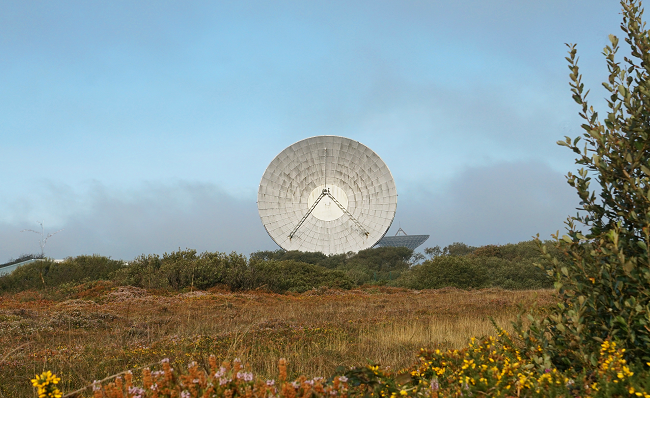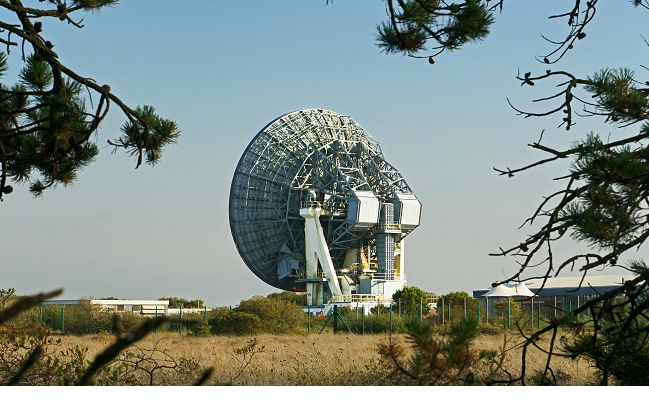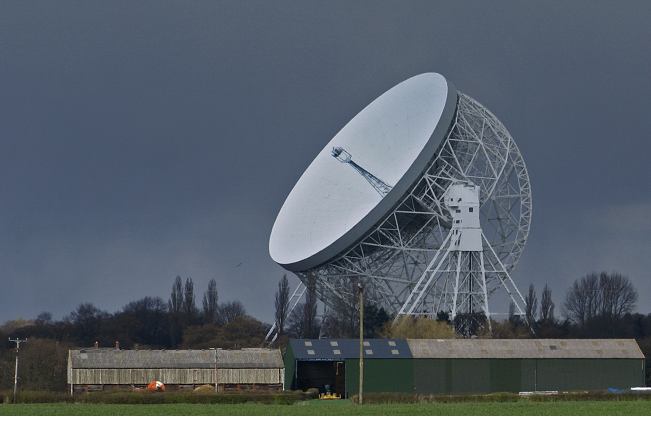Dave Newbitt
This year’s pilgrimage to Cornwall afforded the chance to see Goonhilly Downs for the first time in some while. We stopped and admired the structure of the original Satellite Dish No 1 ‘Arthur’ and felt it amazing this was now 58 years old. A reminder of just how much engineering brilliance existed in what was then still Post Office Telephones.

Geoff Hawkes
The dish looks amazing and as you say it was built to last. Is it still in use or just a museum piece now?Pat Heigham
Splendid!A British friend emigrated to Canada, flying 747s for Air Canada, and I stayed with him just North of Toronto. He had a tracking receiver dish on his land, and I found it fascinating. One could watch a film on the Eastern sat, then two hours later, pick it up mid-West, and 2 hours after that, off the Western one.
The main TV operators used to bounce raw footage across the country and one could tune in and intercept – it wasn’t encrypted!
Dave Newbitt
As to current status I can only pass on what bit I have picked up from Google sleuthing. Because it was Grade II listed back in 2003 it was spared the BT demolition plans when they no longer needed the site and has subsequently been restored by Goonhilly Earth Station to enjoy a second life in Radio Astronomy rather than Sat Comms. I gather in order to effect the motor replacement, heavy lifting gear was brought from the shipyards at Falmouth.I read that the dish is now part of the e-Merlin Network where it works in conjunction with other dishes internationally to improve signal detection without the need for bigger dishes. It’s fun to airily pass on tech stuff that sails straight over my head! The irony of the name is that the Goonhilly dish named Merlin is no more and has nothing to do with the e-Merlin Network.
Roger Long
When in Cornwall its well worth looking up Porthcurno and the Cable and Wireless underground museum.Fascinating insights into global undersea telecoms and its history.
They thought the Germans would attack so it went underground for WWII, the Germans never did attack, but we cut their cable from Hamburg to New York immediately in 1914.
Porthcurno beach is a beauty, it’s under the Minnack open theatre, it shelves steeply and the water colours are green and contrast with Logans Rock outcrop. We last visited in a great storm and many cables were visible – ancient and modern.
We filmed a Science fiction play under the Radio telescope at Jodrell Bank – it’s the Lovell Telescope. Sir Bernard pioneered Radio astronomy. He was lucky to survive WWII, as he narrowly missed the Halifax flight from Malvern testing H2S air to ground radar that killed Alan Dower, Blumlien and 11 other top Radar scientists. He arrived on his bike a little late.
Malvern did a lot of early research that pointed the way to the stars, they were investigating radar noise, it turned out to be meteors.
Dave Newbitt
Thanks for the tip. As it happens, the Minnack was on our list this year but we started the day in Penzance to see the exhibition of works by the Newlyn School of artists (pre-booked with an allocated time slot), continued then to Lamorna Cove where a number of the artists had lived, and should thereafter have headed for the Minnack. Sadly we had booked an early slot for our evening meal at Manaccan near the Helford estuary and we could see there wasn’t going to be time to fit it all in. I didn’t know about the Museum but we shall be in Cornwall again next year and organise our time better.Re the Lovell telescope. My son and family live in Cheshire on the Delamere Forest so we have seen Jodrell Bank on a couple of occasions when visiting them. I took the attached shot of the telescope from the roadside in April 2008.

Roger Bunce
BBC-related Trivia (wot I heard somewhere). Nigel Kneale gave his 1950’s sci-fi hero Quatermass the Christian name ‘Bernard’, after Bernard Lovell, upon whom he was loosely based.Pat Heigham
That quite scary series was transmitted when I was at boarding school, so one could only watch it during the holidays. A splendid maths teacher who wrote war novels under the pen name of ‘Gun Buster’ used to regale us with a synopsis of the missed episodes – not much maths was learnt in those periods, which explains to this day why I’m useless at that subject!No TV in the school for us – but the headmaster allowed the more senior boys to sit on his drawing room floor and watch “Sportsview” (I hated sport) and never realised that I would go on to work on that very programme much later!



